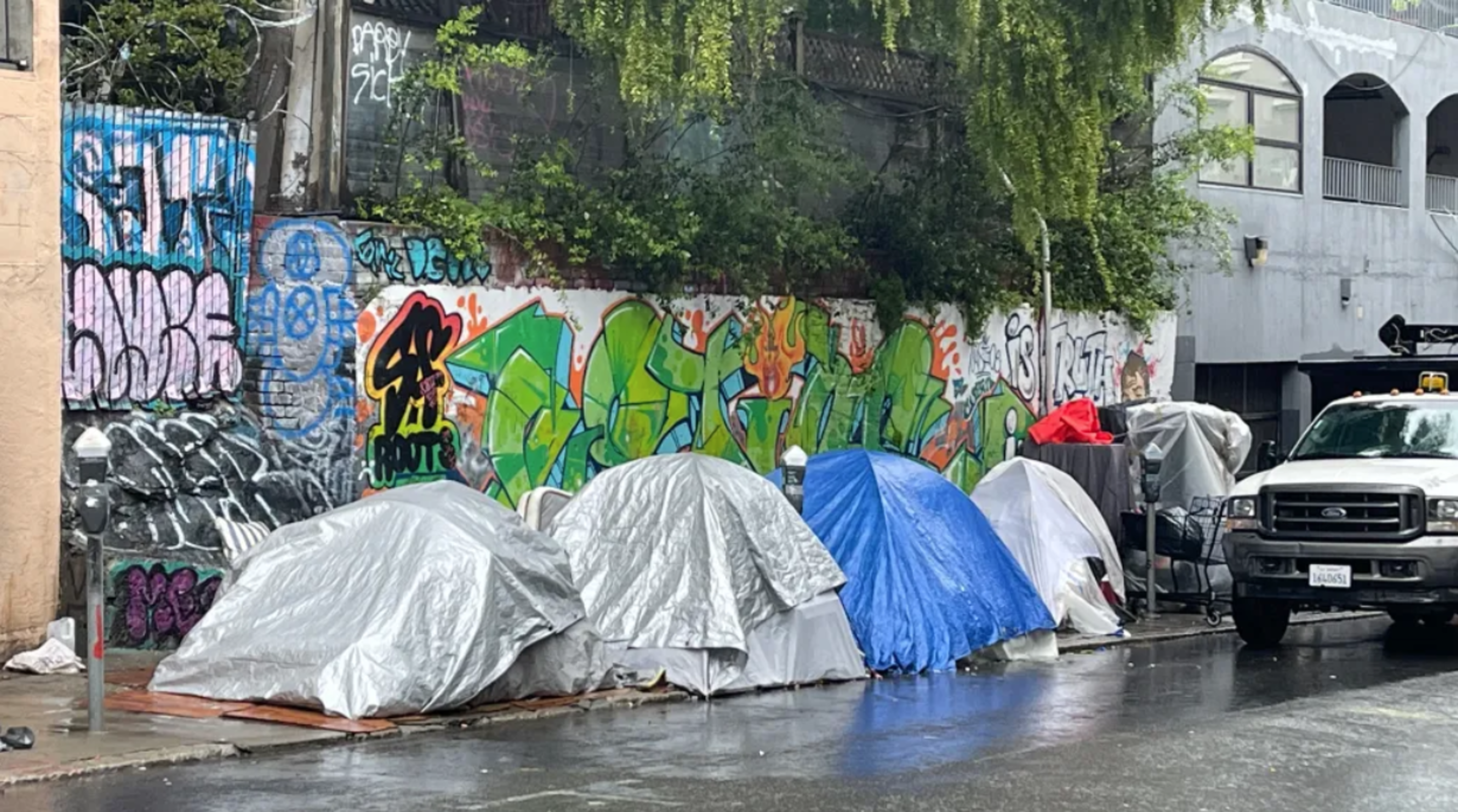San Francisco officials have determined that garden planters installed by residents to deter homeless encampments in a troubled alleyway violate city code.
After years of persistent homeless encampments along Larch Street, neighbors paid thousands of dollars in early July to install steel tanks filled with dirt and succulents, effectively forcing people who were living on the sidewalk in tents to move elsewhere.
Neighbors said the planters were mostly successful in deterring homeless encampments, but newly unearthed public records reveal that Department of Public Works officials believe the planters are illegally blocking the sidewalk.
“The planters don’t allow for a 72” [path of travel], which is in the Directors’ Order,” said Public Work’s staffer Nicolas Huff in an email dated Aug. 22. “Mike noted last month that the planters aren’t even allowing for a 48” [path of travel].”

Carla Short, director of the Department of Public Works, responded to Huff’s email suggesting they notify neighbors to “place [the planters] more strategically.”
A City Hall watchdog named Hazel Williams obtained the records (opens in new tab) and said they found irony in the revelation because disability laws are sometimes used to justify the city’s encampment clearings.

“The city must have seen that the street was not [Americans with Disabilities Act] compliant and ignored it,” Williams wrote in an email to The Standard. “Possibly because they knew the planters would keep homeless people from sleeping there, and they cared more about that than providing ADA access.”
The city hadn’t removed the planters from Larch Street as of Friday afternoon, according to neighbors, who said the city didn’t tell them the planters may be in violation of ADA or city code.
Advocates for homeless people have bashed the use of planters to deter homeless encampments as “hostile architecture.” The city’s waitlist for shelter is nearly 500 people long, and roughly 4,000 people sleep on the streets every night, according to the most recent count.
Neighbors of the alleyway, however, argue that people living on the nearby streets have started fires, vandalized property and engaged in drug activity.

Property manager Tevaite O’Neill said she worries that problematic encampments would return if the city removes the planters, pointing out that with tents or planters, the sidewalk would not be ADA-compliant.
“Nobody wants to speak up and say anything about it when the tents are blocking the sidewalk,” O’Neill said. “Without the planters, there will be tents there. You can’t walk down the sidewalk at all.”

Following the installment of the planters, some homeless people who lived on Larch Street moved to nearby Van Ness Avenue, one of the city’s busiest thoroughfares. There, the battle over homeless encampments and garden planters has continued as residents installed roughly 100 planters along the street in recent months.
Nearby, speakers were installed to deter loitering and homeless camps, apparently blasting the Star Wars theme whenever a group gathers outside apartment buildings on Eddy Street.
“It just speaks to the city’s inability to address the fundamental cause of homelessness in San Francisco,” Williams said. “The lack of political will to house people creates these tensions between housed and unhoused people.”
Most of the planters on Van Ness don’t appear to violate the city’s accessibility codes or the ADA.
Rachel Gordon, a spokesperson for Public Works, said the department is “trying to ascertain who the owners” of the Larch Street planters are.
She said once the department determines the responsible party, the city will explore whether the planters need to be rearranged or removed completely. If the planters are removed, Gordon said the city would also explore ways to make the street safer for housed and unhoused residents.
“They possibly could be removed,” Gordon said. “There had been fights, tents, fires. … We want to figure out from the neighbors what the issue is there.”
